Two Mass Spring System Differential Equation
Two mass spring system differential equation. Energy in the Ideal Mass-Spring System. The equations that govern a mass-spring system At equilibrium. M u γ u k u Ft This is a second order linear differential equation with constant coefficients.
The spring force tension is positive is F k x_2-x_1 and the two equations of motion beginalign F m_1 ddotx_1 -F m_2 ddotx_2 endalign All this is trivial. The equation of motion of a damped spring-mass system is given by the 2nd order ordinary differential equation GDP as follows. BACKGROUND MATH The time domain equation of motion for the mass-spring-damper is represented by Newtons Second Law written as the fol-lowing force balance on a structure 𝐌 𝐱 𝐂 𝐱 𝐊 𝐱 M Mass C Damping K Stiffness.
To do the equations of motion you need positions from an inertial reference frame. C2 bm c km exp ct 0. Types of Solution of Mass-Spring-Damper Systems and their Interpretation The solution of mass-spring-damper differential equations comes as the sum of two parts.
By Hookes Law mg kL While in motion. This is the full blown case where we consider every last possible force that can act upon the system. Eytan Modiano Slide 3 Second order RC circuit System with 2 state variables Described by two coupled first-order differential equations States Voltage across the capacitor - V 1 Current through the inductor - i L What to obtain state equations of the form.
It usually comes with two initial conditions. L2 x2 x1 w1 R2. Two-Mass System Derive the equation of motion for x 2 as a function of F a.
F t l y dt dy R dt d y M λ 2 2. Equations of Motion Assuming. Lets start with the model for the second mass-spring component.
Ut 0 u 0 and ut 0 u 0. Is the characteristic or natural angular frequency of the system.
In this case the differential equation governing the motion would be simply k 0 xx m.
The spring is in compression and the connecting-spring force magnitude is. The right hand side encodes the INPUT SIGNAL an external force at work. Rearranging these differential equations gives Eqs3122. Here we have made use of the fact that a mass attached to the left end of a spring of extension and spring constant experiences a horizontal force whereas a mass attached to the right end of the same spring experiences an equal and opposite force. It usually comes with two initial conditions. Now using Newtons law F m a and the definition of acceleration as a x we can write two second order differential equations. F t l y dt dy R dt d y M λ 2 2. The complementary function which arises solely due to the system itself and the particular integral which arises solely due to the applied forcing term. Ill hint at two of the three.
Lets start with the model for the second mass-spring component. F t l y dt dy R dt d y M λ 2 2. So the di erential equation for the mass spring is now m d2x dt2 kx dx zdt friction force. In layman terms Lissajous curves appear when an objects motions have two independent frequencies. Types of Solution of Mass-Spring-Damper Systems and their Interpretation The solution of mass-spring-damper differential equations comes as the sum of two parts. The force is considered to be proportional the instantaneous velocity. BACKGROUND MATH The time domain equation of motion for the mass-spring-damper is represented by Newtons Second Law written as the fol-lowing force balance on a structure 𝐌 𝐱 𝐂 𝐱 𝐊 𝐱 M Mass C Damping K Stiffness.
















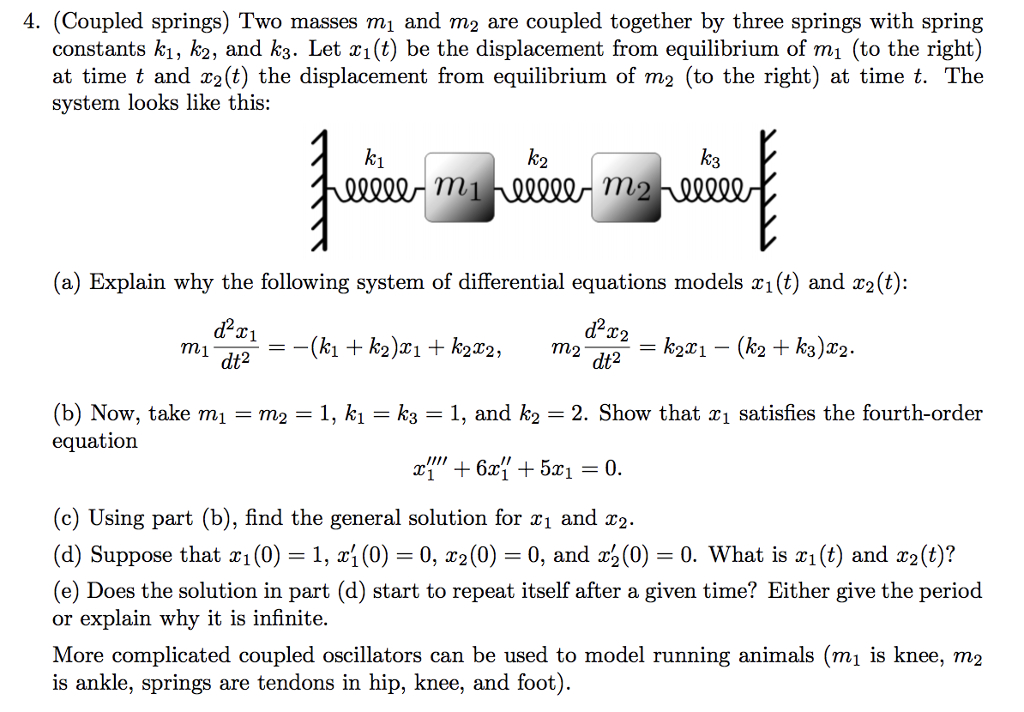


.png)




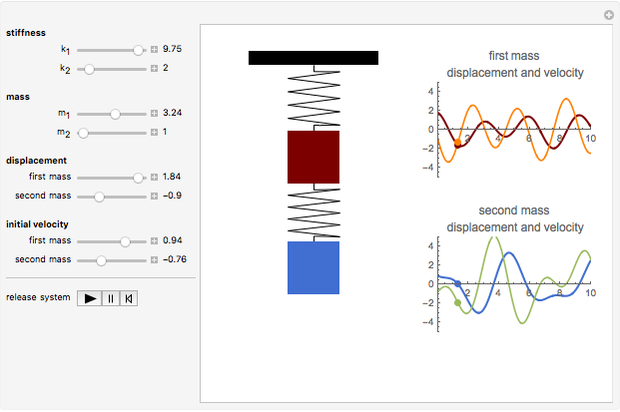


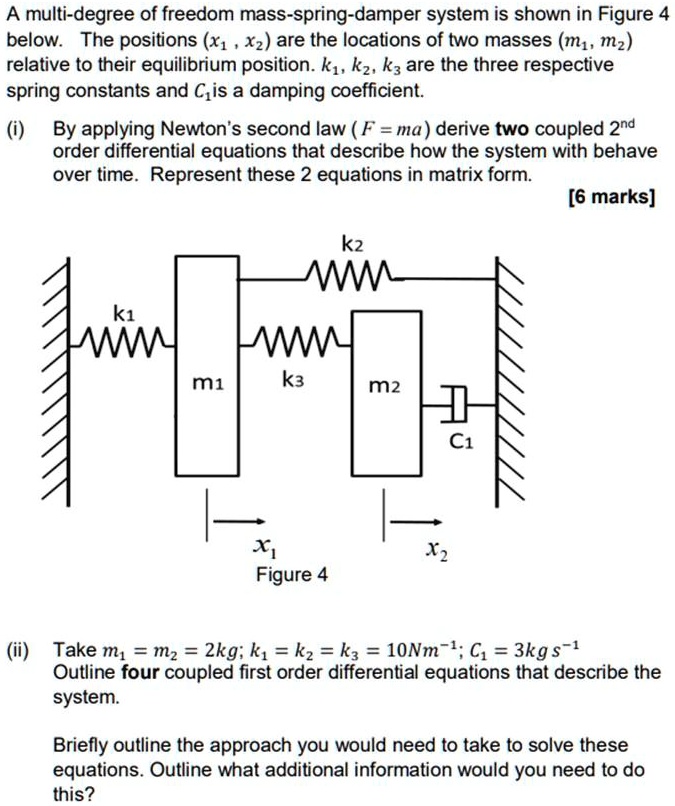
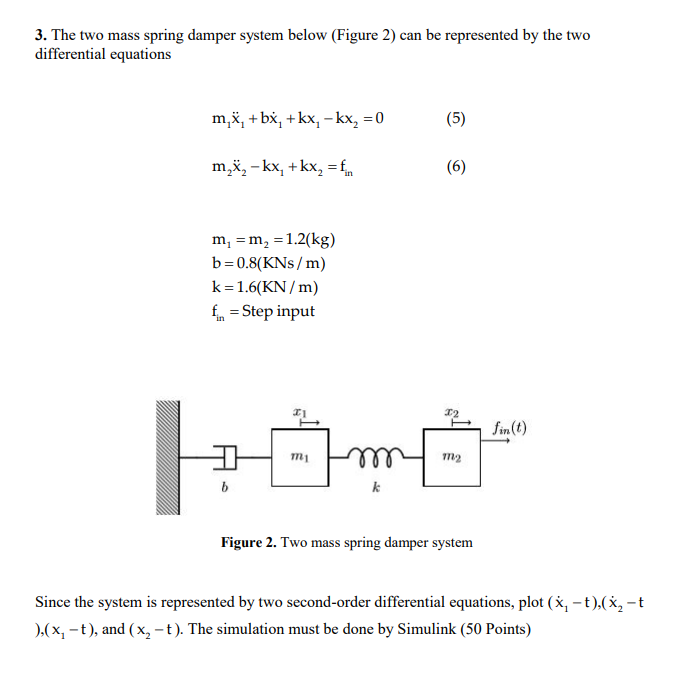



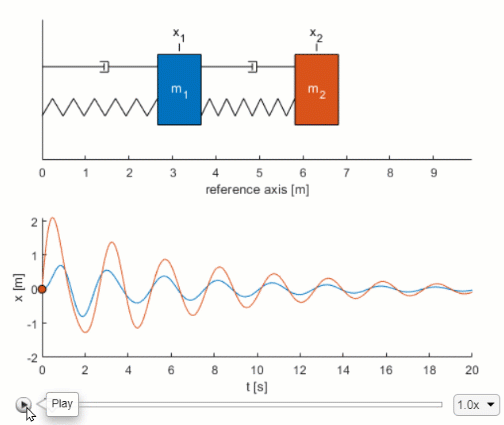


Post a Comment for "Two Mass Spring System Differential Equation"